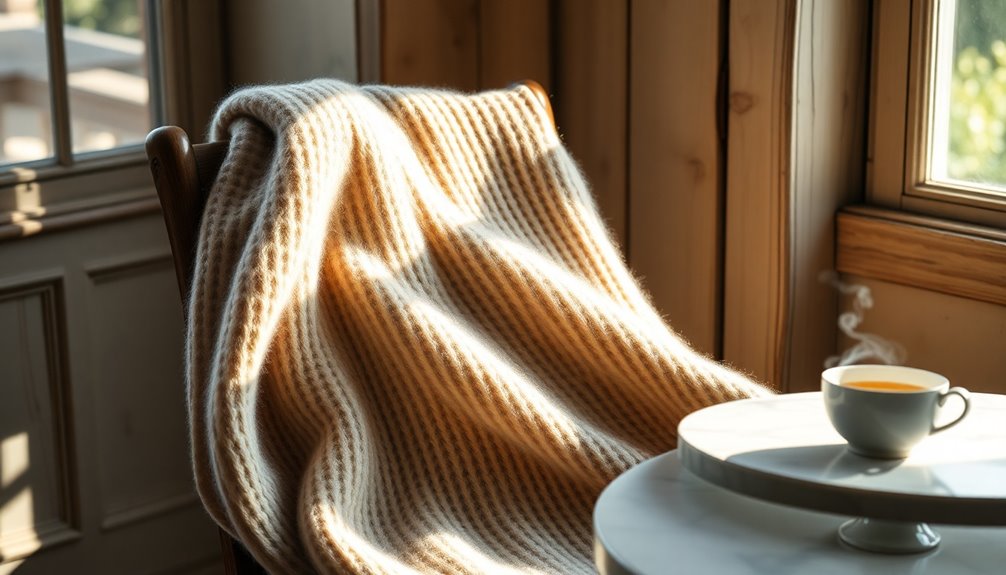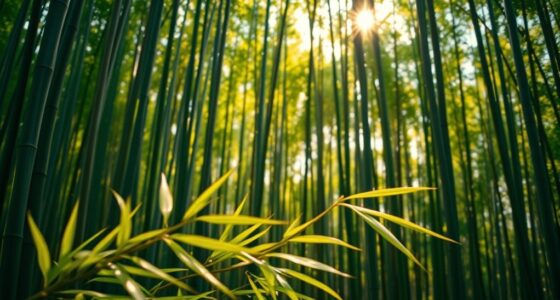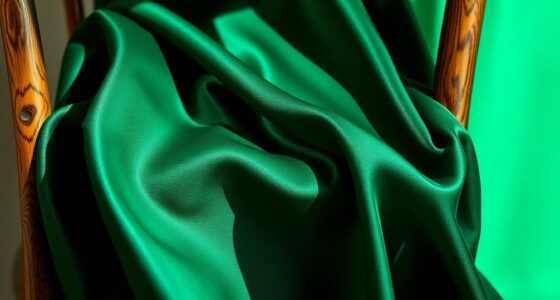Cashmere's luxurious feel comes at a cost—both financially and environmentally. While high-quality cashmere can create lasting emotional connections and often becomes a cherished staple, overgrazing practices degrade habitats and threaten sustainability. Cheaper options may appeal to your wallet, but they often lack durability and quality. Understanding the difference in grades and caring for your garments is essential. Explore more about cashmere's impact and how to make informed choices in your purchasing journey.
Key Takeaways
- Cashmere offers exceptional softness and warmth, making it a luxurious investment for comfortable, high-quality garments.
- High-quality cashmere garments typically start at $400, reflecting their durability and lasting value.
- Budget cashmere options exist but often deteriorate faster and may lack the premium feel of higher-end pieces.
- Environmental concerns linked to cashmere production highlight the need for sustainable practices and alternatives like Merino wool.
- Cashmere holds emotional value, often becoming cherished heirlooms due to its longevity and the memories associated with it.
Understanding Cashmere: Origins and Production
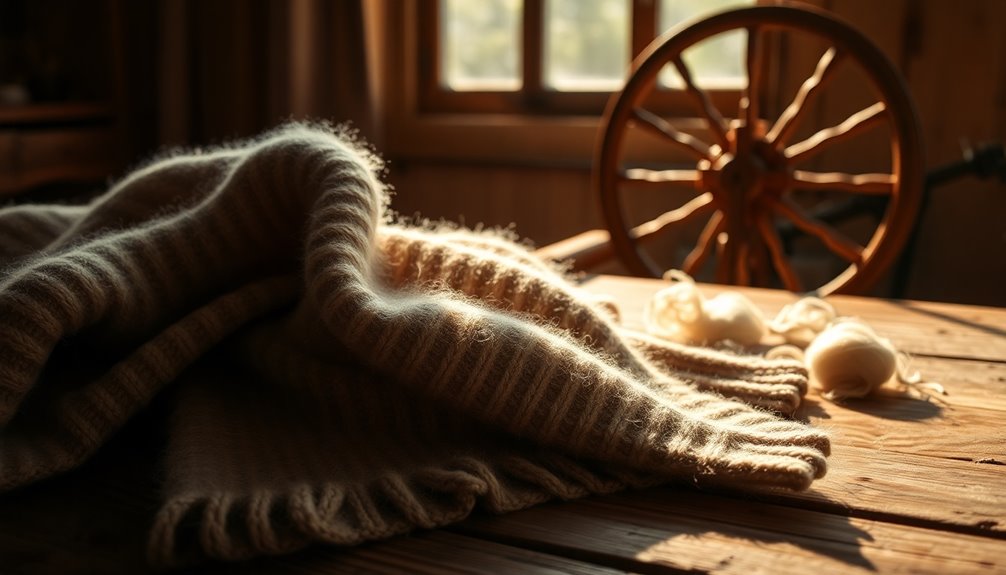
When you think of luxury fibers, cashmere often stands out due to its unique softness and warmth. Cashmere is harvested from the soft underhair of cashmere goats primarily found in Central Asia, especially in northern China and Mongolia.
Each goat produces about 200 grams of cashmere wool annually, which contributes to this coveted luxury fiber. As demand for cashmere has surged, goat populations in Mongolia skyrocketed from 5.2 million in 1991 to 25.8 million in 2004.
However, the quality of cashmere fibers heavily relies on the goats' grazing conditions. Overgrazing can degrade their habitat, resulting in lower quality fibers.
As a result, a shift toward producing less but higher quality cashmere is essential for sustainable practices.
The Environmental Impact of Cashmere Farming
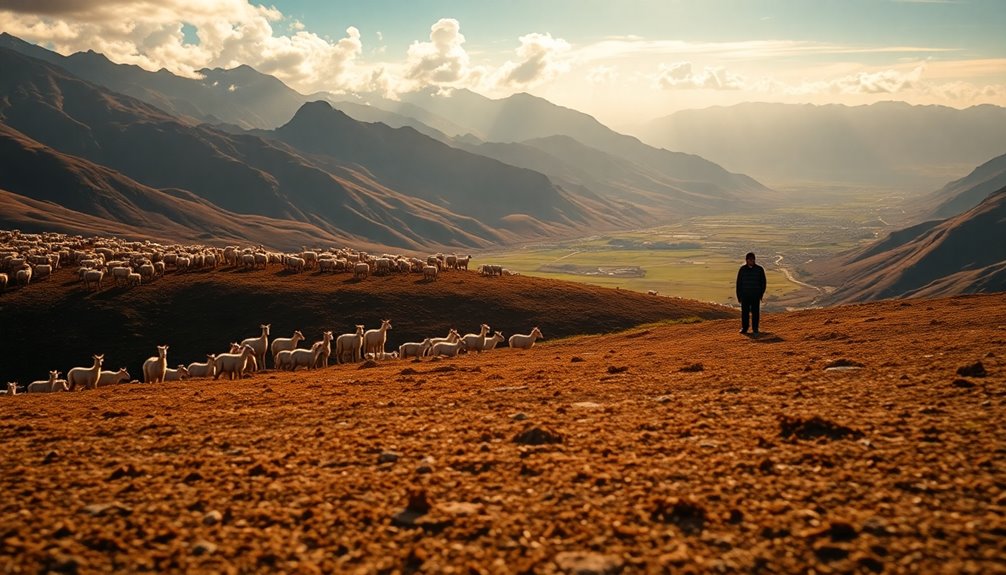
When you think about cashmere farming, it's hard to ignore the environmental toll it takes.
Overgrazing by the booming goat population is degrading habitats and accelerating desertification, which can lead to severe consequences for the ecosystem.
It's essential to explore sustainable alternatives that balance economic needs with environmental health.
Habitat Degradation Consequences
As cashmere farming has expanded, its environmental consequences have become increasingly evident, particularly in Mongolia. The surge in cashmere goats from 5.2 million in 1991 to 25.8 million in 2004 has led to severe overgrazing, considerably degrading natural grasslands. This degradation not only threatens biodiversity but also results in lower quality fibers, as malnourished goats produce less valuable cashmere. The following table highlights the impact of cashmere farming:
| Consequence | Effect |
|---|---|
| Overgrazing | 65% grassland degradation |
| Soil Exposure | Increased dust storms |
| Biodiversity Loss | Ecosystem imbalance |
| Fiber Quality | Lower-quality cashmere |
Unsustainable practices challenge the balance between economic benefits for herders and the ecological health of Central Asia's grasslands.
Overgrazing and Desertification
Overgrazing by cashmere goats has led to alarming levels of desertification in Mongolia, severely impacting the region's ecosystem. Since 1991, the goat population skyrocketed from 5.2 million to 25.8 million, driven by rising cashmere demand.
This surge has caused a staggering 65% degradation of Mongolia's natural grasslands. The goats' intense grazing habits strip vegetation to the roots, destabilizing soil and increasing erosion, leading to more dust storms.
Environmental degradation from cashmere production worsens water, soil, and air quality, contributing to a broader ecological crisis. Additionally, overgrazing threatens the welfare of the goats themselves, leading to starvation and lower-quality cashmere fibers, ultimately perpetuating the cycle of environmental harm.
Sustainable Alternatives Exploration
The alarming degradation of Mongolia's grasslands due to cashmere goat overgrazing calls for immediate action in the form of sustainable alternatives. You should consider fibers like merino wool, which offers a more environmentally friendly option. Unlike cashmere, merino wool is sheared from sheep without harmful overgrazing practices. Additionally, exploring camel and yak fibers can also help reduce the environmental impact associated with cashmere farming. These alternatives not only promote sustainability but also encourage better land management practices. By shifting your focus to these sustainable alternatives, you can contribute to the rehabilitation of degraded landscapes and support ethical farming. Research indicates that early exposure to STEM can foster innovation in sustainable practices. It's time to rethink your choices and embrace materials that respect both the environment and animal welfare.
How to Differentiate Between Quality Cashmere and Budget Options
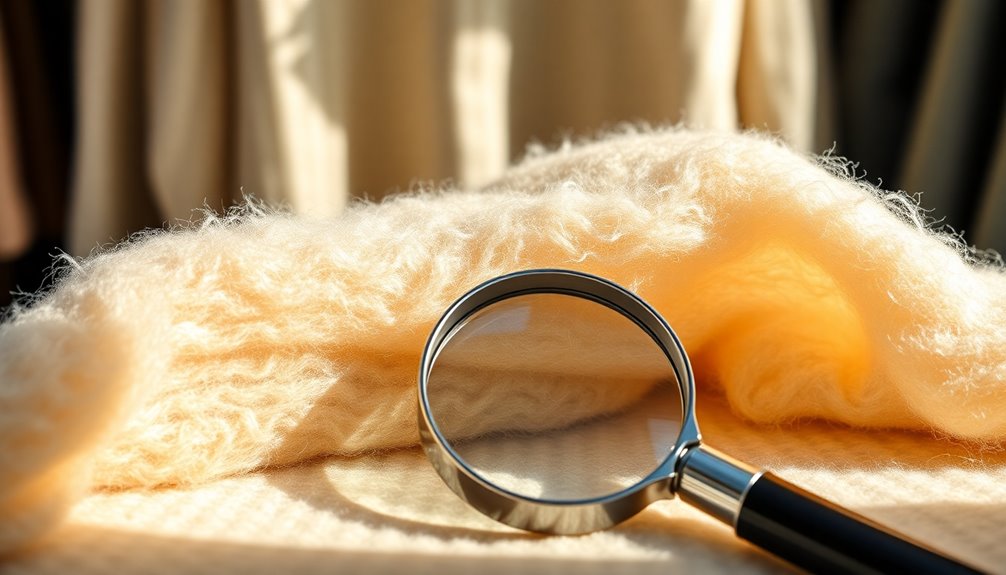
When you're shopping for cashmere, knowing how to spot quality can save you from wasting money on budget options that don't hold up.
Look for cashmere sweaters made from Grade-A fibers, which are longer and denser than the shorter, lower-quality fibers often found in cheaper alternatives. Quality cashmere typically costs at least $400, while budget versions hover around $50.
Pay attention to the gauge and ply; higher ply counts indicate a more durable, long-lasting garment. Also, brands that disclose fiber length and density, like Everlane, often provide superior quality.
Avoid cashmere treated with chemicals for softness; instead, opt for garments that rely on natural processes, ensuring you get the best value for your investment.
The Role of Blending Fabrics in Cashmere Pricing
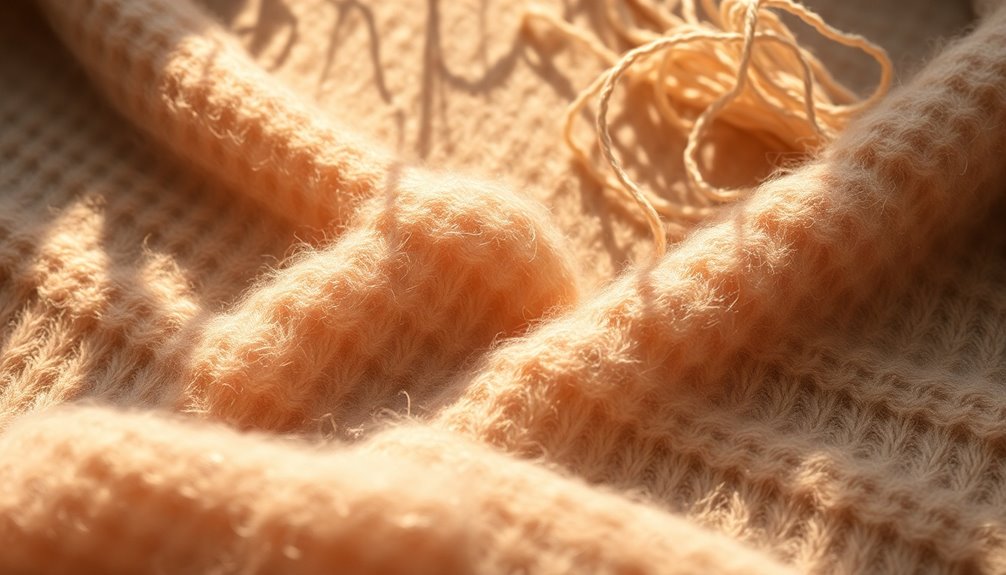
- Cost-Effectiveness: Blending cashmere with materials like wool or silk can lower production costs, making garments more affordable.
- Enhanced Feel: A blend, like Gobi's 70% cashmere and 30% silk, can provide a softer touch and better durability compared to low-percentage cashmere.
- Quality Awareness: While blends may feel luxurious, they don't always match the longevity and quality of pure, high-grade cashmere. Additionally, understanding the role of high-grade fibers in fabric quality can help consumers make informed purchasing decisions.
Consumer Experiences With Budget Cashmere

For many shoppers, budget cashmere offers a tempting blend of comfort and affordability, making it an attractive option for those looking to enjoy luxury without a hefty price tag.
Many consumers find pieces from brands like Naadam and Uniqlo soft and suitable for layering. However, experiences can vary. For instance, Preston Schlueter's Club Room sweater has lasted over two years, proving that budget cashmere can balance comfort and sustainability.
Yet, Nathan Price's experience shows that while thin materials work for casual wear, there's a desire for thicker, more durable options.
While budget cashmere often undergoes treatments to reduce pilling, it generally deteriorates faster than higher-quality cashmere, leaving some shoppers wanting more longevity from their investment. Additionally, excessive sugar consumption in candy can lead to a craving for comfort items, such as cozy cashmere.
Sustainable Alternatives to Traditional Cashmere
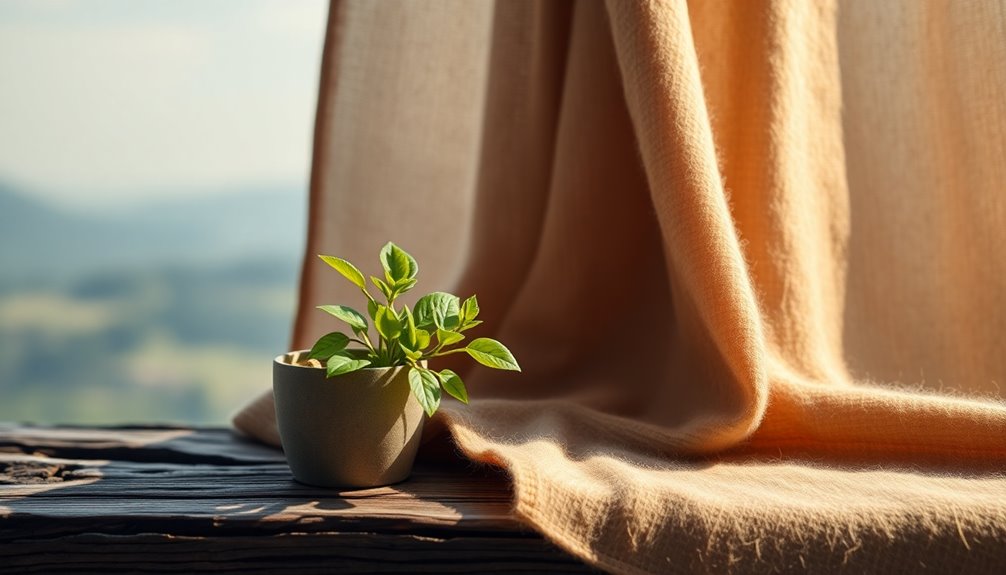
As consumers become more conscious of their environmental impact, sustainable alternatives to traditional cashmere are gaining traction. You might want to contemplate these options:
- Camel Hair: Known for its softness and durability, camel hair provides warmth without the overgrazing issues associated with cashmere goats.
- Yak Wool: Sourced from yaks raised in high-altitude areas, this fiber is resilient and causes minimal environmental degradation.
- Sheep Wool: When sourced from sustainable farms, sheep wool offers a renewable and ethical alternative, providing similar warmth and versatility as cashmere.
Choosing these sustainable alternatives not only supports animal welfare but also helps you make a positive contribution to the environment.
Care Tips to Extend the Life of Cashmere Garments
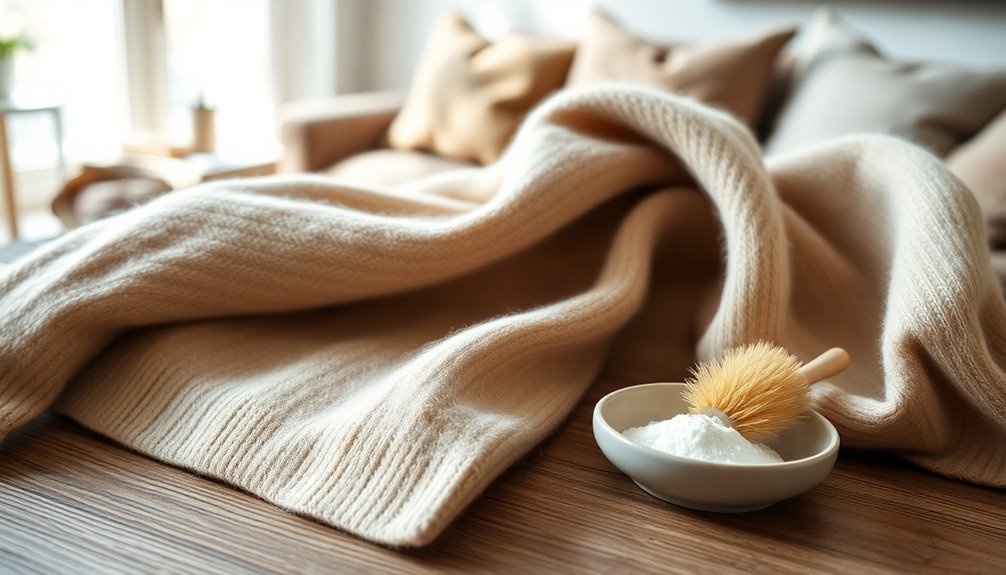
To keep your cashmere garments looking their best, you'll want to pay attention to how you wash and store them.
Washing techniques like using baby shampoo and lukewarm water can make a big difference in maintaining softness.
Plus, proper storage will help prevent damage and keep your pieces in great shape for years to come.
Washing Techniques Explained
When it comes to caring for cashmere, understanding the right washing techniques is essential for preserving its luxurious feel and longevity.
To keep your cashmere used garments looking fresh, follow these tips:
- Wash every 7 to 10 wears: This helps maintain quality and softness while preventing dirt buildup.
- Use baby shampoo: Soak your garment in lukewarm water for at least 15 minutes. This gently cleanses without damaging fibers.
- Avoid twisting or wringing: Instead, roll your cashmere in a towel to absorb excess water and maintain its shape.
For stains, apply baby shampoo with a cotton swab, let it sit for 30 minutes, and then rinse.
Regularly brush or comb your cashmere to manage pilling, keeping it looking new.
Storage Recommendations Offered
Proper washing techniques are just the beginning of keeping your cashmere garments in top condition; storage plays an essential role too.
For your cashmere sweaters, always fold them instead of hanging to prevent stretching and maintain their shape. Use breathable storage bags or cotton pillowcases to protect your sweaters from dust and moths while ensuring air circulation.
Store them in a cool, dry place, away from direct sunlight to avoid fading and fiber degradation. Including cedar blocks or lavender sachets will help deter moths naturally.
Don't forget to regularly check your stored cashmere for signs of pests or damage, and make sure to clean items before storing to minimize the risk of infestation.
Following these storage recommendations will greatly extend the life of your cashmere.
The Economics of Cashmere: Pricing Trends and Market Dynamics
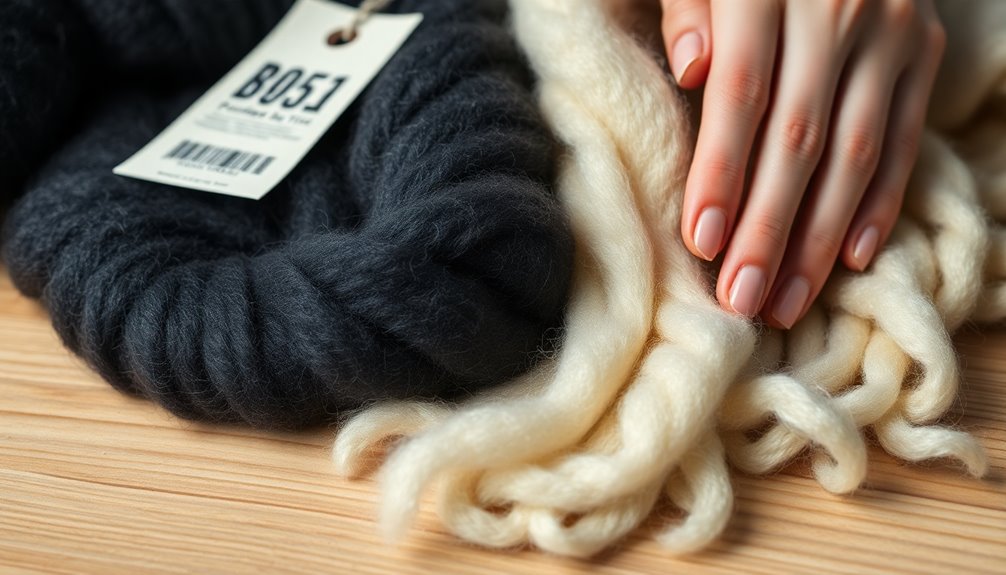
As cashmere production has surged, especially in Mongolia, the pricing dynamics of this luxurious fiber have shifted considerably.
With goat populations skyrocketing from 5.2 million in 1991 to 25.8 million in 2004, the cost of cashmere has become more accessible for consumers.
Here are some key points to reflect upon:
- Each cashmere goat produces about 200 grams of wool annually, boosting overall supply.
- Economic reforms in Mongolia have facilitated increased cashmere output, driving prices down.
- Despite lower prices, sustainability issues arise from overgrazing and environmental degradation.
The Emotional Value of High-Quality Cashmere
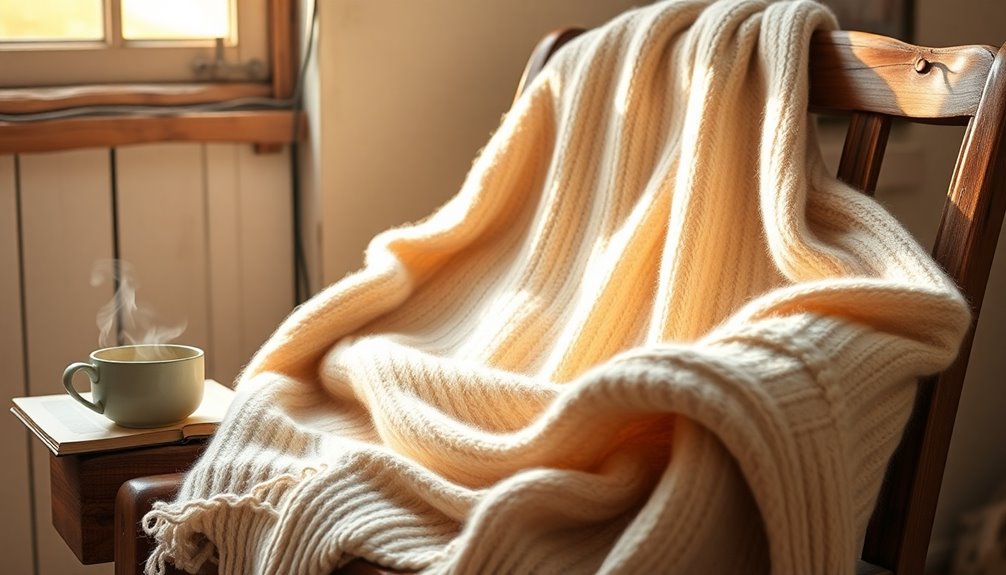
When you invest in high-quality cashmere, you're not just buying a piece of clothing; you're creating a lasting connection filled with memories.
The luxurious feel and warmth of cashmere often evoke comforting sentiments, making each wear special.
Plus, knowing your cashmere will last for decades adds an emotional depth that elevates your wardrobe experience.
Connection to Clothing
While many garments provide warmth and style, high-quality cashmere sweaters stand out for their emotional value, transforming into cherished staples over the years.
Each piece fosters a profound emotional connection that goes beyond mere clothing, making them feel like heirlooms.
Here are three reasons why cashmere holds such sentimental value:
- Longevity: With the potential to last 20 to 30 years, cashmere becomes a trusted companion in your wardrobe.
- Tactile Experience: Its soft, luxurious feel makes every wear a comforting experience, deepening your bond with the garment.
- Mindful Fashion: Investing in high-quality cashmere encourages sustainable choices, enhancing the emotional connection you develop with each piece.
In essence, cashmere elevates your wardrobe experience, making each moment in it more meaningful.
Longevity and Memories
High-quality cashmere isn't just about warmth and style; it's a gateway to cherished memories that can last for decades.
With a lifespan of 20 to 30 years, investing in a cashmere sweater means you're not just buying clothing; you're creating a lasting connection. Each time you wear it, you recall moments—family gatherings, cozy evenings, or special occasions that become intertwined with that piece.
Its emotional durability enhances this bond, allowing you to form sentimental attachments over time. Plus, vintage cashmere offers nostalgia and sustainability, letting you embrace the past while making eco-friendly choices.
When you choose high-quality cashmere, you're investing in more than fabric; you're weaving memories into your life's tapestry.
Luxury Experience and Comfort
There's something truly special about slipping into a cashmere sweater that transcends mere fashion.
The luxurious softness wraps you in warmth, making every chilly day feel like a cozy embrace. Investing in high-quality cashmere isn't just about the look; it's about the experience.
Here are three reasons why it's worth it:
- Emotional Connection: Each wear brings cherished memories, enhancing your bond with the piece.
- Long-lasting Quality: With proper care, these sweaters can last 20 to 30 years, making them a timeless staple in your wardrobe.
- Ultimate Comfort: Cashmere's warmth, three times that of wool, elevates your everyday comfort, transforming routine into luxury.
When you choose high-quality cashmere, you're embracing both comfort and emotional value.
Making Informed Choices: Navigating the Cashmere Marketplace
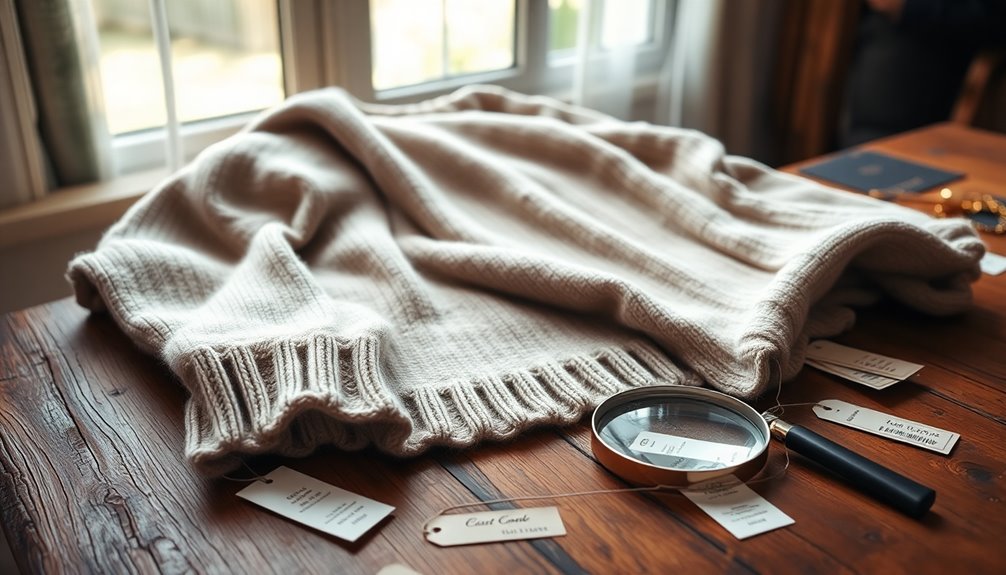
How can you guarantee you're making smart choices in the cashmere marketplace? Start by recognizing that high-quality cashmere typically costs at least $400—this price reflects durability and longevity, with pieces lasting 20 to 30 years.
Pay attention to gauge and ply; higher ply often indicates a denser, more robust fabric. Be cautious of low-price cashmere options, as they're often blended with other materials, compromising feel and lifespan.
Also, consider second-hand shopping—a sustainable choice that helps you find luxurious cashmere at lower prices, promoting responsible consumption.
Frequently Asked Questions
Is Cashmere Really Worth It?
Is cashmere really worth it?
If you value warmth, comfort, and durability, you'll likely find cashmere a worthwhile investment. It's markedly warmer than wool and can last decades when cared for properly.
However, be mindful of quality, as cheaper options mightn't offer the same longevity.
If you're looking for sustainable choices, consider the environmental impact of your purchase.
Ultimately, it depends on your priorities and how much you're willing to invest.
Why Is Cashmere so Expensive Now?
Cashmere's high price stems from its limited supply and the labor-intensive process of harvesting. Each goat only produces a small amount of cashmere annually, making it a rare commodity.
Additionally, the quality of cashmere varies, with premium options demanding higher costs due to superior softness and durability.
Environmental factors, like overgrazing and land degradation, further impact production.
When you invest in cashmere, you're paying for its craftsmanship, longevity, and the care needed to produce it.
What's the Difference Between Cheap and Expensive Cashmere?
Imagine wrapping yourself in a cloud—this is what high-quality cashmere offers.
The difference between cheap and expensive cashmere lies in the fibers. Expensive cashmere uses longer, denser fibers for a softer, more durable feel, while cheap versions often blend with synthetics, leading to quicker wear and pilling.
You'll find that investing in quality means your cashmere can last decades, whereas budget options might only hold up for a few seasons.
Why Can a Cashmere Sweater Cost $2000 or $30?
A cashmere sweater can cost anywhere from $30 to $2000 due to factors like quality, sourcing, and craftsmanship.
When you opt for a high-end brand, you're getting Grade-A fibers from rare goats, while cheaper options often use lower-quality blends.
The intricate weaves and attention to detail in luxury sweaters guarantee durability and comfort.
Plus, sustainable practices in production often justify the higher price, making it a long-term investment compared to budget alternatives.
Conclusion
So, is cashmere worth the hype? The truth is, it depends on what you value. While high-quality cashmere offers unmatched softness and durability, budget options can feel good too, but they often lack longevity. Plus, the environmental impact of cashmere farming raises questions about sustainability. By understanding these factors, you can make an informed choice that aligns with your values. Ultimately, whether it's a luxury or a necessity is up to you.
